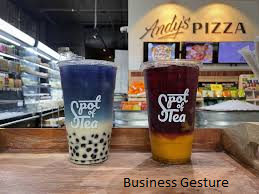The New York Times Crossword is a loved day by day puzzle that has captivated thousands and thousands of solvers for decades. One particular clue that frequently seems is “Spot of tea.” This seemingly simple word contains substantial cultural and linguistic weight, making it a charming topic for each crossword lovers and people interested by the enterprise of crossword puzzles.
1: The Role of the New York Times Crossword
a) A Brief History
The New York Times Crossword become first published in 1942 and has seeing that grow to be one of the most prestigious and extensively diagnosed crossword puzzles globally. Edited via a series of famend crossword editors, the puzzle has advanced to encompass contemporary language, cultural references, and numerous themes. Its reputation has handiest grown with the advent of virtual subscriptions, allowing solvers international to engage with the puzzle daily.
b) Economic Impact
The crossword puzzle isn’t just a form of leisure; it’s also a substantial revenue circulate for the New York Times. With millions of subscribers, the crossword puzzle allows pressure digital subscriptions and retains dependable readers. The puzzle’s reputation contributes to the general logo energy of the New York Times, positioning it as a frontrunner in each journalism and recreational sports.
2: “Spot of Tea” in Crossword Clues
a) Cultural Significance
The phrase “spot of tea” is deeply rooted in British tradition, referring to a small amount of tea, typically enjoyed in the afternoon. This word has made its way into the American lexicon, frequently evoking pics of British customs and leisurely tea breaks. Its common appearance in crosswords highlights the puzzle’s reliance on cultural references to engage solvers.
b) Linguistic Play
Crossword clues like “spot of tea” regularly play with multiple meanings and wordplay. The phrase “spot” can talk to a place, a stain, or a small quantity, making it a flexible and fascinating clue. This linguistic flexibility demanding situations solvers to suppose creatively and enhances their solving experience. The use of familiar phrases additionally helps bridge cultural gaps, making the puzzle on hand to a wider target market.
3: The Business of Crossword Puzzle Creation
a) Puzzle Editors and Constructors
The advent of the New York Times Crossword entails a collaborative attempt between editors and constructors. Constructors, or puzzle creators, design the grid and write the clues, while editors evaluate and refine the puzzles to make sure they meet the e-book’s requirements. This manner calls for a deep information of language, lifestyle, and contemporary events, in addition to a knack for attractive solvers with clever and honest clues.
b) Monetization Strategies
The New York Times monetizes its crossword puzzle via several channels. Digital subscriptions are the primary revenue source, with a substantial part of subscribers mentioning the crossword puzzle as a key cause for his or her subscription. Additionally, the New York Times gives standalone crossword subscriptions, special puzzle packs, and merchandise. These various revenue streams help preserve the crossword puzzle’s manufacturing and distribution.
4: Audience Engagement and Community Building
a) Solvers’ Demographics
The New York Times Crossword attracts a numerous audience, ranging from casual solvers to dedicated puzzle fanatics. This huge demographic reach is a testament to the puzzle’s universal attraction and its capacity to project solvers of all skill levels. Understanding the target market’s choices and remarks is vital for the puzzle’s endured achievement and growth.
b) Online Communities
The upward thrust of virtual systems has fostered colourful on-line communities in which solvers can discuss clues, percentage fixing techniques, and connect to fellow lovers. Social media platforms, forums, and devoted crossword websites offer spaces for engagement and collaboration. These communities no longer handiest enhance the solving experience but additionally make contributions to the puzzle’s popularity and longevity.
5: The Future of Crossword Puzzles
a) Technological Integration
Advancements in era have opened new avenues for crossword puzzle engagement. Interactive digital codecs, mobile apps, and augmented truth stories are reworking how solvers have interaction with puzzles. These innovations provide possibilities for improved user studies and new sales models, including in-app purchases and top rate content.
b) Educational Potential
Crossword puzzles aren’t simplest a source of entertainment however also a precious academic device. They enhance vocabulary, enhance problem-fixing skills, and promote cognitive health. The New York Times Crossword’s integration into educational programs and programs should similarly extend its reach and effect, making it a valuable aid for rookies of every age.
Conclusion
The word “spot of tea” in the New York Times Crossword is extra than only a clue; it represents the intersection of lifestyle, language, and business within the world of crossword puzzles. The New York Times Crossword’s enduring popularity and monetary significance spotlight the puzzle’s position as a liked hobby and a important component of the ebook’s achievement. As generation keeps to evolve and new possibilities emerge, the crossword puzzle will certainly remain a loved and influential a part of each the New York Times and the broader puzzle community.
